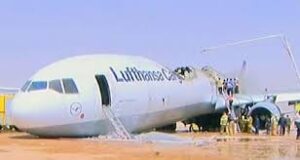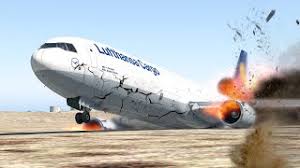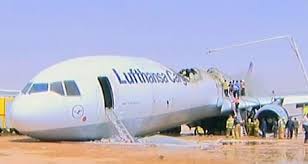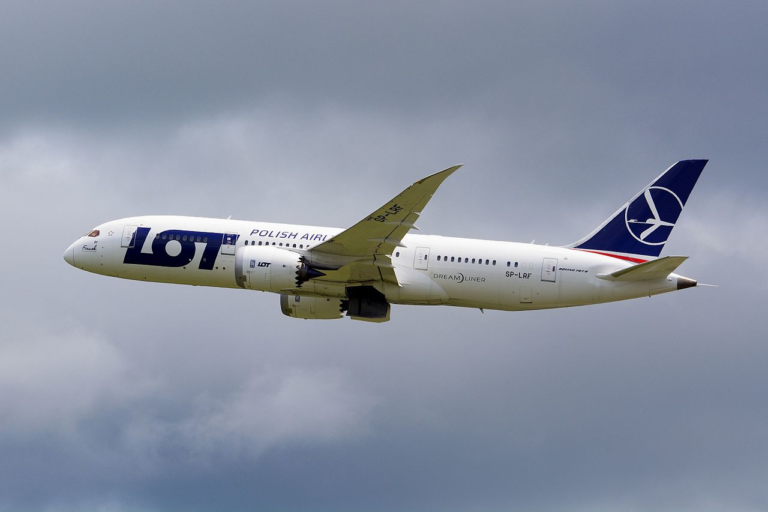Tragedy Strikes Lufthansa Cargo Flight: All Live Animals Perish After In-Flight Incident
In a devastating event that has sparked international outrage and raised critical questions about the treatment of live animals in air transport, a Lufthansa Cargo flight has become the center of a tragic and unsettling incident. According to initial reports and statements released by aviation authorities and animal rights organizations, a cargo plane operated by Lufthansa Cargo experienced a severe in-flight malfunction that resulted in the death of all live animals on board.
As investigations continue and grief settles over the global animal welfare community, details of the incident are beginning to surface, painting a harrowing picture of what transpired aboard the aircraft. The tragedy not only highlights potential oversights in cargo safety protocols but also shines a spotlight on the ethical and logistical challenges of transporting live animals via commercial airlines.

The Incident: What Happened Aboard Lufthansa Cargo
The ill-fated flight departed from Frankfurt Airport (FRA), Germany’s busiest cargo hub, on what was intended to be a routine international journey to Singapore, with a stopover scheduled in Doha, Qatar. The aircraft, a Boeing 777F, was carrying a diverse shipment of cargo, including several pallets of live animals destined for zoos and breeding centers in Southeast Asia.
Among the animals were exotic species, including several rare birds, reptiles, and at least two endangered mammals. Sources close to the matter stated that all animals were housed in climate-controlled sections of the cargo hold, compliant with the International Air Transport Association’s (IATA) Live Animals Regulations (LAR), which Lufthansa Cargo has historically prided itself on following rigorously.
Approximately three hours into the flight, air traffic control reportedly received a distress signal from the aircraft’s crew indicating an onboard systems malfunction. Although the flight remained airborne and eventually made an emergency landing in Doha, the damage had already been done. Upon landing and opening the cargo hold, ground crews discovered the lifeless bodies of all live animals on board.
Preliminary findings suggest a catastrophic failure of the environmental control systems responsible for regulating temperature and oxygen within the cargo bay. Temperatures inside the compartment are believed to have soared to dangerous levels, while oxygen levels plummeted—creating an uninhabitable environment for the animals trapped inside.
A History of Caution—and a Breaking Point
Lufthansa Cargo has long positioned itself as a leader in the safe and humane transport of live animals. Its Animal Lounge in Frankfurt is one of the most advanced animal handling facilities in the world, featuring veterinary care, dedicated staff, and strict adherence to IATA standards.
“This is not just a procedural failure—it’s a betrayal of trust,” said Dr. Elena Morrissey, director of the International Wildlife Transport Council. “People choose Lufthansa because of their reputation for care. Something went terribly wrong, and the result is a massive, entirely preventable loss of life.”
In the past, Lufthansa has faced only minor incidents related to live animal transport, none of which have resulted in significant fatalities. This most recent tragedy has therefore shaken confidence in even the most trusted names in air cargo.
The Global Outcry
The public response has been swift and emotional. Animal welfare organizations across the globe have condemned the incident, with many calling for a temporary suspension of all live animal transports by Lufthansa Cargo until a full investigation is complete.
Social media has exploded with messages of grief, anger, and demands for accountability. The hashtag #LufthansaAnimalTragedy has trended across platforms, drawing attention from celebrities, influencers, and activists.
PETA (People for the Ethical Treatment of Animals) issued a scathing statement: “Airlines have no business treating sentient beings as mere freight. This tragedy is a stark reminder of the cruelty inherent in transporting animals by air, no matter the company’s protocols.”
The World Wildlife Fund (WWF) expressed deep sorrow and called for a global reevaluation of live animal transport, particularly for endangered species: “Every animal lost is a loss to biodiversity. We cannot afford these kinds of mistakes.”

Inside the Investigation
Lufthansa has confirmed that an internal investigation has been launched in cooperation with German aviation authorities and independent safety auditors. The airline released an initial statement expressing “profound regret and sorrow” over the incident and has pledged to take “every necessary step” to understand and rectify the situation.
“At Lufthansa Cargo, the safety and welfare of animals in our care is a responsibility we do not take lightly,” the statement read. “We are deeply saddened by this incident and are committed to full transparency as the investigation unfolds.”
Experts from the European Union Aviation Safety Agency (EASA) have been dispatched to Doha and Frankfurt to assist with the technical review. Investigators will examine the aircraft’s flight data and environmental control systems logs, as well as interview the flight crew and cargo handlers.
According to early speculations, a failure in the aircraft’s Air Conditioning Packs—critical components of the pressurization and ventilation system—may have gone undetected due to a sensor malfunction or software error. However, these theories remain unconfirmed pending a comprehensive report.
A Legal and Financial Reckoning
The financial repercussions for Lufthansa Cargo could be significant. The animals onboard were reportedly insured for millions of euros, and the clients—ranging from international zoos to conservation organizations—are expected to seek legal action.
Animal transport contracts typically include clauses addressing liability in the event of loss, but given the magnitude and nature of this incident, Lufthansa may face lawsuits that go beyond financial restitution and enter the realm of negligence and reputational damage.
Legal analysts suggest that if proven preventable, the incident could lead to significant regulatory fines, both within the European Union and internationally, particularly if it is found that existing safety protocols were insufficient or improperly followed.
Moreover, calls are mounting for legislative changes to existing air transport laws. “We need stricter mandates for environmental control monitoring, real-time telemetry for cargo holds, and a dedicated oversight body for animal transport,” argued Margot Henley, a transportation policy expert in Brussels.
The Ethical Debate: Should Animals Be Flown at All?
Beyond the technical and legal aspects, this incident reopens a long-standing ethical debate: Should animals—especially wild or endangered ones—be transported by air at all?
Critics argue that no matter how advanced the technology or how well-trained the staff, the risks are too high and the stakes too dire. “We are talking about sentient beings forced into confined, stressful, and often dangerous conditions,” said Dr. Luis Navarro, a zoologist who has studied stress in transported wildlife. “This tragedy proves again that even the best systems can fail.”
Proponents of responsible animal transport counter that, in many cases, such transfers are necessary for conservation, research, and species preservation. They point to successful breeding programs and international wildlife exchange agreements that depend on safe and timely transport.
But incidents like this cast a long shadow over those arguments, particularly when the outcome is the loss of every animal involved.
What’s Next for Lufthansa Cargo?
While Lufthansa has temporarily suspended all live animal cargo shipments pending investigation results, the future of its animal transport division remains uncertain. Internally, sources say morale among staff at the Frankfurt Animal Lounge has plummeted, and some employees are struggling to cope with the emotional aftermath.
The airline’s CEO, Dorothea von Boxberg, is expected to address the public in the coming days, outlining steps Lufthansa plans to take in response, including potential partnerships with animal welfare organizations and possible overhauls of onboard monitoring technologies.
Already, Lufthansa is exploring options to integrate real-time environmental monitoring with satellite uplinks, allowing ground crews to receive live updates from cargo holds—a move that, had it been in place, may have saved lives in this instance.
A Broader Wake-Up Call
This tragedy may ultimately serve as a catalyst for industry-wide reform. Other major airlines, including Emirates SkyCargo and Qatar Airways Cargo, are reviewing their own live animal transport protocols in light of the Lufthansa incident.
The International Air Transport Association has also announced a special session of its Live Animals and Perishables Board to review current standards and consider amendments in the wake of the disaster.
If there is a silver lining to be found, it is in the potential for this event to galvanize long-overdue reforms, improve accountability, and perhaps even prompt a global reevaluation of how—and whether—we transport animals by air.
Conclusion
The loss of life aboard Lufthansa Cargo’s flight is a tragedy on every level: for the animals, the organizations that entrusted them to the airline, the people who cared for them, and for the industry as a whole. As investigations continue and the global community processes the shock and grief of this incident, the hope is that real change—technological, regulatory, and ethical—can emerge from the ashes of this preventable disaster.
For now, the world mourns dozens of innocent lives lost in a cargo hold that should have been a safe passage, not a death trap. And for Lufthansa, the path forward begins with accountability, reform, and a renewed commitment to the lives that can no longer speak for themselves






